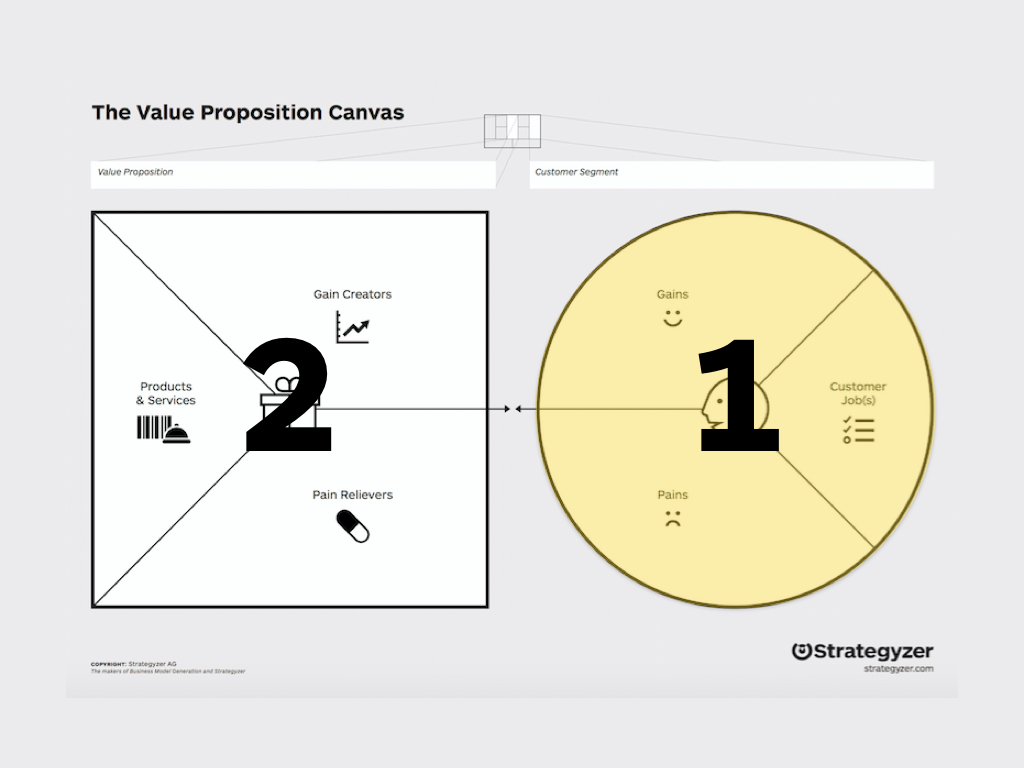
In a previous post, I pointed out the importance of digging for facts instead of opinions when conducting customer interviews. In this post I want to point out another common mistakes innovation teams make: they focus on the solution, instead of first understanding and testing the customer “problem”, i.e. customer jobs, pains, and gains.
Here’s a little learning exercise I conduct with innovation teams during workshops. Teams work in groups of two: one person plays an innovator who has developed new teeth whitening technology, the other person plays the customer. I tell the innovator they will conduct their first series of customer discovery interviews . Because I’ve told them they have the solution (this is a pedagogical trap I set by planting a solution in the innovators head), they immediately go out and talk to customers about that solution.
The point is to never lead with the solution during customer interviews — at least not until you have very strong evidence that you deeply understand customer jobs, pains, and gains. Customer discovery is not about selling something. When you commit this mistake, you’re framing the conversation around what you’re interested in, and not what matters to the customer. You can keep your potential solution in the back of your mind, but really your task is to identify and validate relevant customer jobs, pains, and gains. If those jobs, pains, and gains are not related to the solution you had in mind, then you’re going to have to go down a different track.
Why is it relevant to test jobs, pains, and gains before you test the solution? When you test the solution first with the customer, and the customer rejects your solution, you won’t know if the rejection is because the solution is no good, or if the customer “problem” is irrelevant. It’s important to generate evidence around what matters to customers first.
I see this mistake often when teams follow the Lean Startup “Build-Measure-Learn” loop blindly. People take the “build” literally and , build a Minimum Viable Product (MVP) before thoroughly investigating the “problem”, in other words customer jobs, pains, and gains. In fact, you can test a whole lot with customers before building anything. It’s incredibly important to have a good understanding of customer jobs, pains, and gains--it’s also the cheapest and fastest research you can do. This is even more relevant in capital-intensive investment goods because it’s hard to build MVPs.


